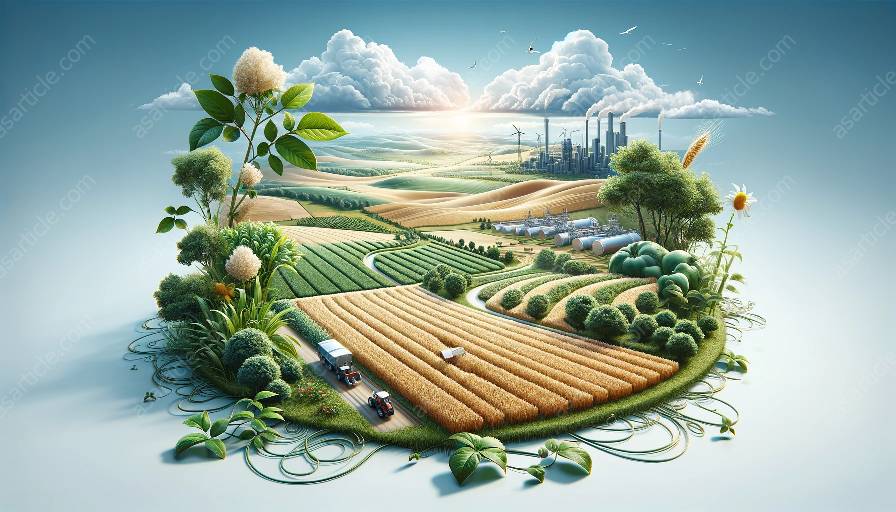Crop simulation modeling is a powerful tool in modern agricultural practices, serving as a bridge between agricultural meteorology, climatology, and agricultural sciences. This comprehensive topic cluster aims to explore the impact, relevance, and applications of crop simulation modeling, and its compatibility with agricultural meteorology and climatology.
The Importance of Crop Simulation Modeling
Crop simulation modeling involves the use of computer-based models to simulate the growth, development, and yield of crops under varying environmental conditions. These models integrate knowledge from agricultural meteorology and climatology to predict crop responses to different weather patterns, soil conditions, and management practices.
Benefits of Crop Simulation Modeling:
- Assists farmers in making informed decisions related to crop selection, planting dates, and irrigation scheduling
- Provides insights into the impact of climate change on crop yield and quality
- Enables researchers to evaluate the efficacy of different agricultural practices and technologies
- Supports policy-makers in developing strategies for sustainable agriculture
Compatibility with Agricultural Meteorology and Climatology
Agricultural meteorology and climatology play a crucial role in crop simulation modeling. These disciplines provide the essential data and insights necessary for developing accurate and reliable crop models. Meteorological parameters such as temperature, precipitation, solar radiation, and humidity, along with climatic factors such as long-term weather patterns, are incorporated into crop simulation models to predict crop growth and yield under diverse environmental scenarios.
Agricultural meteorologists and climatologists work closely with crop modelers to validate and improve the performance of these models by ensuring that they reflect real-world conditions and capture the complexities of agricultural ecosystems.
Applications in Agricultural Sciences
Crop simulation modeling has broad applications in agricultural sciences, contributing to advancements in agronomy, plant physiology, and soil science. By simulating crop responses to environmental factors, these models aid in the development of resilient crop varieties, efficient land management strategies, and sustainable agricultural practices.
Key Areas of Application:
- Enhancing crop breeding programs through the identification of traits related to stress tolerance and yield potential
- Assessing the impact of weather extremes on crop productivity and resource allocation
- Optimizing fertilizer and irrigation management to maximize resource use efficiency
- Supporting precision agriculture by tailoring management practices to specific environmental conditions
Future Directions and Innovations
The field of crop simulation modeling continues to evolve through technological advancements and interdisciplinary collaborations. With the integration of big data, machine learning, and remote sensing, crop models are becoming more sophisticated and capable of capturing the intricate interactions between crops and their environment.
Researchers are also exploring the potential of ensemble modeling, where multiple models are combined to provide more robust predictions and insights. Furthermore, efforts are underway to improve the representation of biological processes within the models, allowing for better predictions of crop responses to changing environmental conditions.
Conclusion
Crop simulation modeling stands at the intersection of agricultural meteorology, climatology, and agricultural sciences, offering valuable solutions for sustainable and resilient crop production. By harnessing the power of data-driven models, researchers and practitioners can make informed decisions, mitigate risks, and optimize agricultural resources in a rapidly changing climate and environment.

